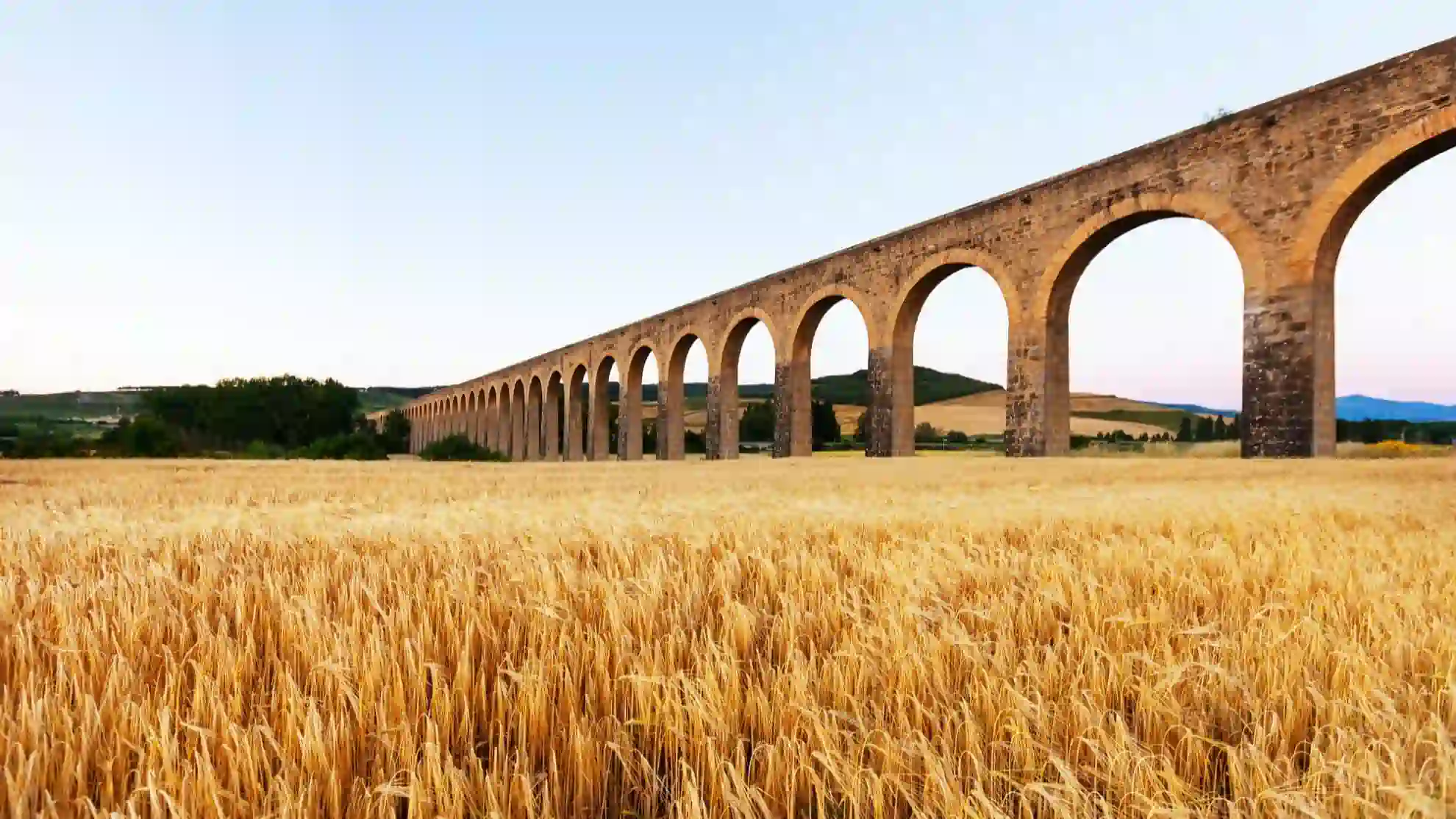The Pillars of the Earth by Ken Follett is a historical novel set in 12th-century England, focusing on the decades-long struggle to build a magnificent cathedral in the fictional town of Kingsbridge.
While the novel centers around the enormous effort required to create the cathedral, it also delves deeply into the lives, loves, ambitions, and rivalries of the people involved.
The story mixes themes of power, faith, love, survival, and social upheaval during a period of civil war and instability in England.
Main characters in The Pillars of the Earth by Ken Follett
Tom Builder: A master stonemason whose dream is to build a beautiful cathedral.
Ellen: A mysterious, independent woman who becomes Tom’s partner and mother to Jack.
Jack Jackson: Ellen’s intelligent, artistic son who grows up to be a brilliant architect.
Prior Philip: A deeply religious, principled monk determined to transform Kingsbridge Priory into a center of greatness.
Aliena: A noblewoman who experiences a dramatic fall from grace after her family loses everything; she shows grit and resourcefulness.
William Hamleigh: The violent, cruel antagonist who seeks power and causes much suffering.
Bishop Waleran Bigod: A corrupt, ambitious churchman and constant opponent to Philip.
Alfred: Tom’s headstrong and jealous son.
Richard (of Kingsbridge): Aliena’s loyal brother who becomes a knight.
Summary of The Pillars of the Earth by Ken Follett
The Pillars of the Earth by Ken Follett tells a sweeping story set in 12th-century England—a time filled with uncertainty, war, and sharp divides between rich and poor. At its heart, the book is about the dreaming and building of a great cathedral in Kingsbridge, but it is much more.
It is a tale about people: how they love, fight, hope, and survive during a dramatic time in history.
The novel opens with a shocking event—the public hanging of an innocent man and the curse his lover, Ellen, places on those responsible. This act sets a tone for a story packed with fate, struggle, and revenge. Soon after, Tom Builder loses his job and, along with his pregnant wife Agnes and their children, is cast into poverty.
After Agnes dies giving birth, Tom is so desperate and hopeless that he leaves his newborn son in the forest, only to return and find him gone, taken in by monks at Kingsbridge Priory. Tom meets the mysterious Ellen, who helps and later becomes his partner, and together, with her son Jack and his children Alfred and Martha, they journey to Kingsbridge.
Kingsbridge is a small, struggling town with a poor priory. Prior Philip, a devout and kind monk, dreams of turning it into a place of spiritual and community strength by building a grand cathedral.
He sees not just the beauty in stone, but the hope such a building could bring to the people. However, there are many obstacles: the priory is almost broke, rival churchmen scheme for power, and the country is torn between competing monarchs—a time known as “The Anarchy.”
Political and personal ambitions collide. William Hamleigh, the novel’s villain, seeks to gain land and power after being denied Aliena’s hand in marriage. He is brutal, burning homes, ruining families, and blocking progress at every turn to satisfy his greed and his mother’s ambitions.
Bishop Waleran Bigod, a cunning churchman, manipulates events behind the scenes, creating troubles for Philip and anyone seeking honest work.
Aliena, once a noble lady, finds her world destroyed after her father, the Earl of Shiring, is imprisoned for rebelling against the king. Stripped of her status and wealth, she devotes herself to caring for her younger brother, Richard, and swears to help him regain their lost earldom.
Aliena’s journey from privilege to poverty shows her incredible strength—she becomes a successful wool merchant, breaking barriers for women of her time.
As the years pass, Tom and Philip persuade the people and nobles to support building the cathedral. Tom’s lifelong dream begins to take shape as he plans and oversees construction. But troubles never end. Tom dies, and his role as leading mason is inherited by his artistic and clever stepson, Jack.
Jack’s innovations and vision make the new cathedral extraordinary, but they also create friction with his half-brother, Alfred, who is jealous of his skill.
Meanwhile, Jack and Aliena fall in love, but their path is never smooth. They are kept apart by circumstance, bad luck, and the ongoing war. William’s violence haunts Aliena, and she and Jack both face countless setbacks—fires, betrayals, and the constant threat of poverty.
Through their endurance, Ken Follett shows how hope and love can blossom in even the darkest times.
The construction of the cathedral becomes a symbol of all the characters’ dreams. Prior Philip faces political plots and betrayals, always working to balance fairness with ambition.
Sometimes his faith is his greatest strength, other times his weakness, especially when enemies exploit the church’s corrupt side. His battle with Bishop Waleran Bigod is one of ideals: Philip wants the church to help people, while Waleran only craves power.
As the decade-long project nears its end, secrets from the past are revealed, old wounds are healed, and the town experiences both good fortune and tragedy.
The completion of the cathedral stands as a triumph, not just of architecture, but of the enduring will of ordinary people—builders, merchants, monks, and mothers—who refuse to give up.
By the novel’s final chapters, the grand Kingsbridge cathedral is finished. It rises as a monument of faith, community, and perseverance, forever altering the fates of all who struggled to make it possible.
The journey is hard, marked by war, famine, betrayal, and even murder, but the people of Kingsbridge endure, supported by friendship, love, and a belief in building something more lasting than themselves.
Major themes in The Pillars of the Earth
Power and Ambition: The novel explores struggles for power—between kings and rebels, churchmen and nobles, and even among ordinary people. Characters must choose whether to seek power for good or selfish ends.
Faith and Religion: Building the cathedral is a symbol of faith, but Follett also shows the church’s potential for corruption through characters like Bishop Waleran. Prior Philip’s genuine spirituality contrasts with Waleran’s ambition.
Social Class and Injustice: The book highlights how social rank controls people’s lives, but also how individuals like Aliena can defy these limits and rise through talent and grit.
Love and Sacrifice: Romantic and family love motivate characters to endure hardship. Jack and Aliena’s time apart, and Tom’s passion for building, show how love demands big sacrifices but also gives hope.
Change and Progress: The construction of the cathedral represents innovation—both its promise and danger. The novel questions whether change truly improves society or just creates new problems.
Good vs. Evil: The constant fight between honest, kind people and those willing to destroy for power runs throughout the novel, raising questions about morality and redemption.
Conclusion
The Pillars of the Earth by Ken Follett is more than a story about building a cathedral—it is a vivid portrait of how people survive, dream, and change their world, even when history and fate conspire against them.
With easy-to-understand storytelling, strong characters, and universal themes, Follett’s novel continues to move readers and remains a touchstone for fans of historical fiction.
Whether you are drawn by epic tales, complex characters, or the challenge of building something beautiful from nothing, this book reminds us that, together, ordinary people can achieve the extraordinary.




